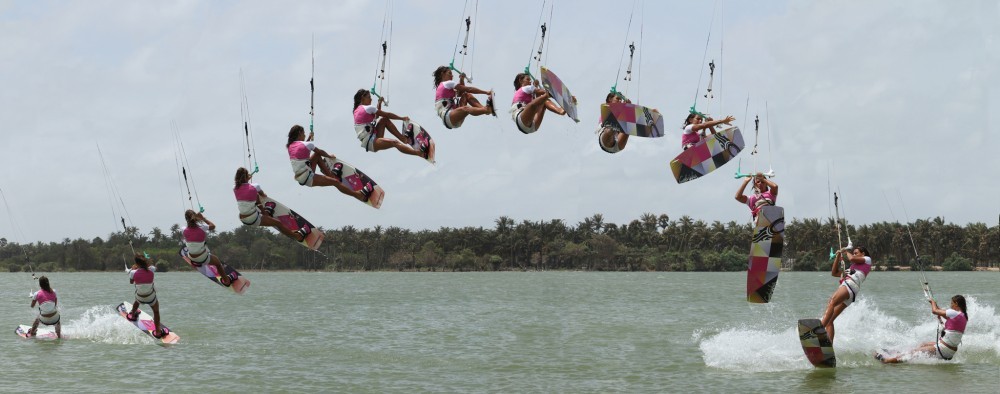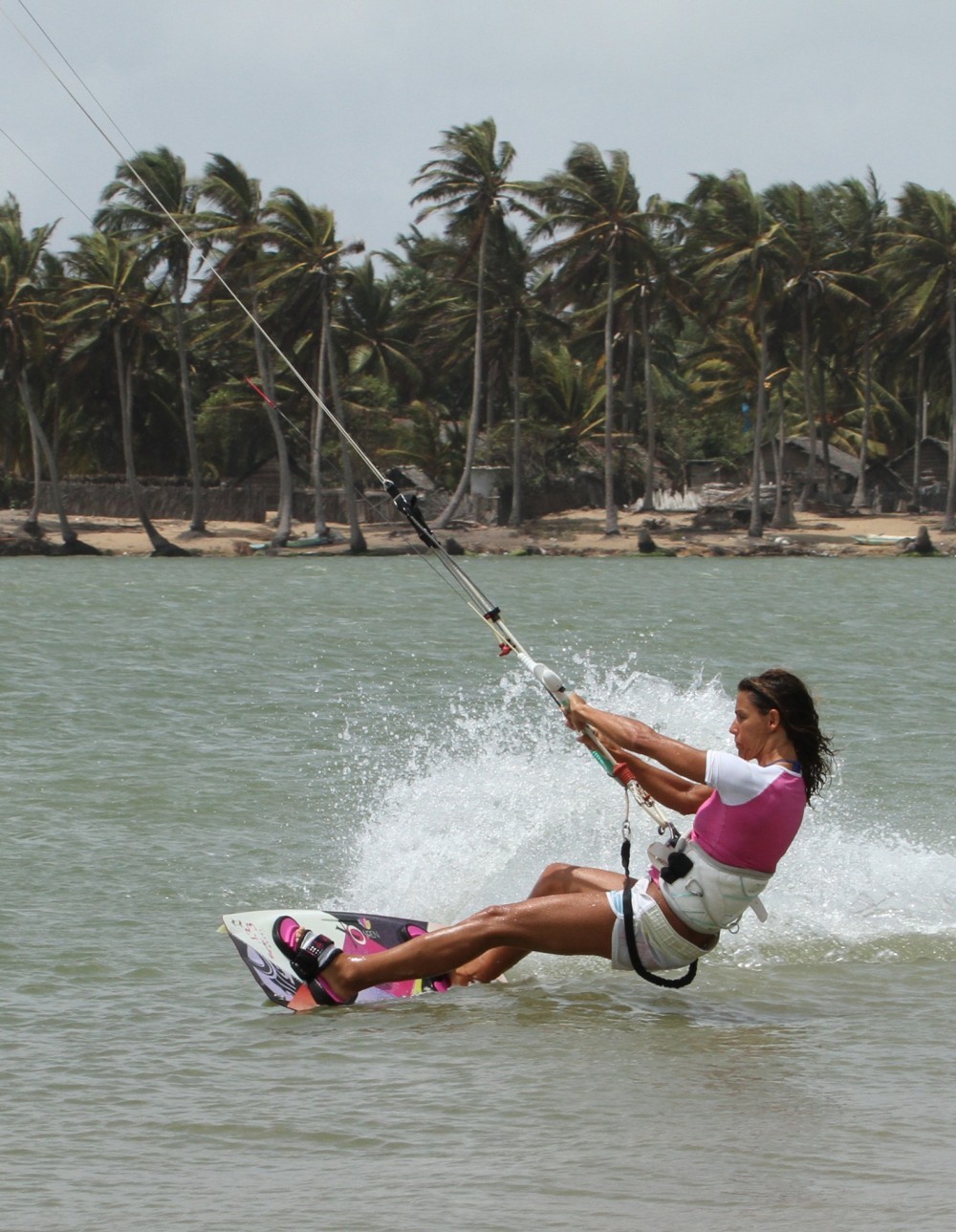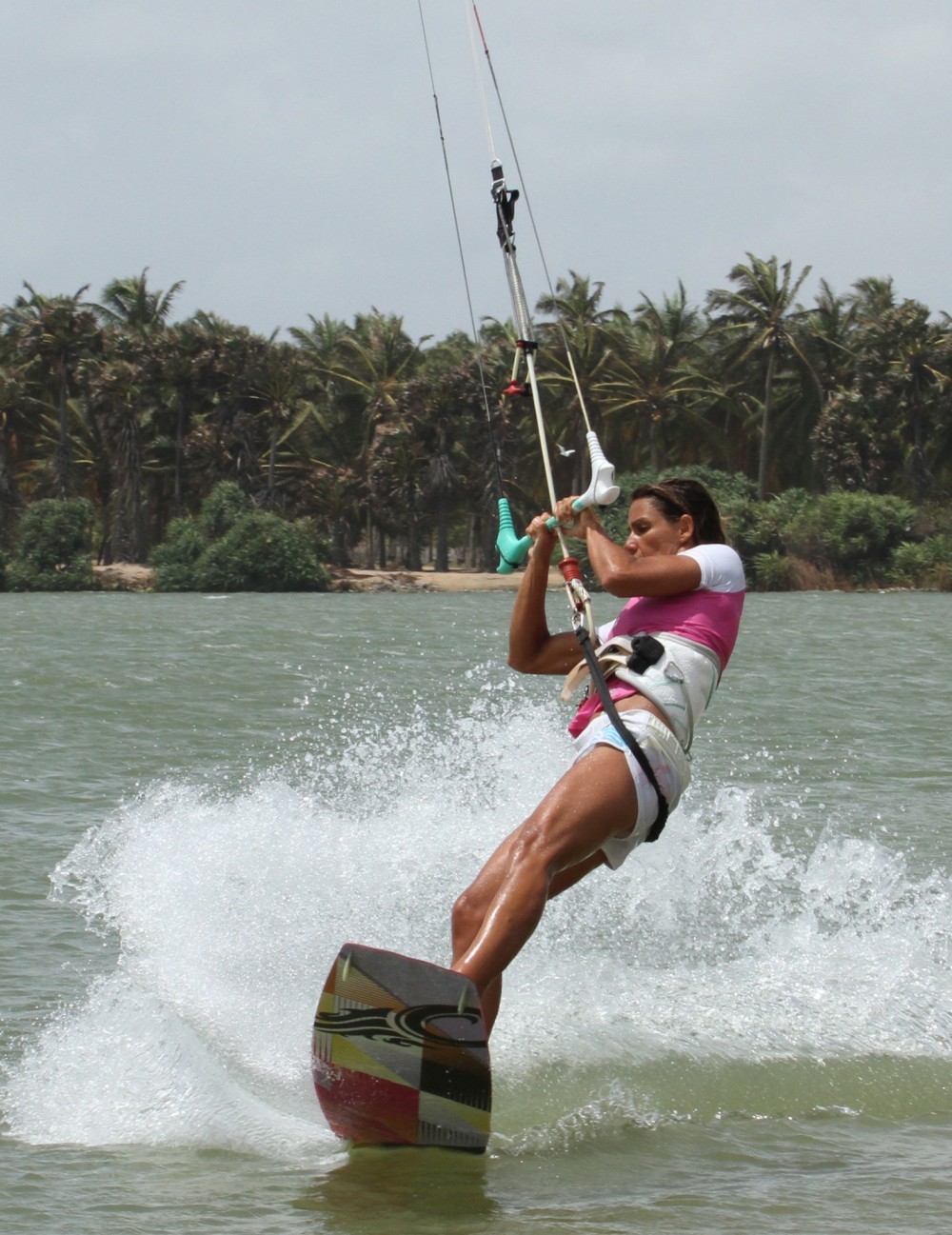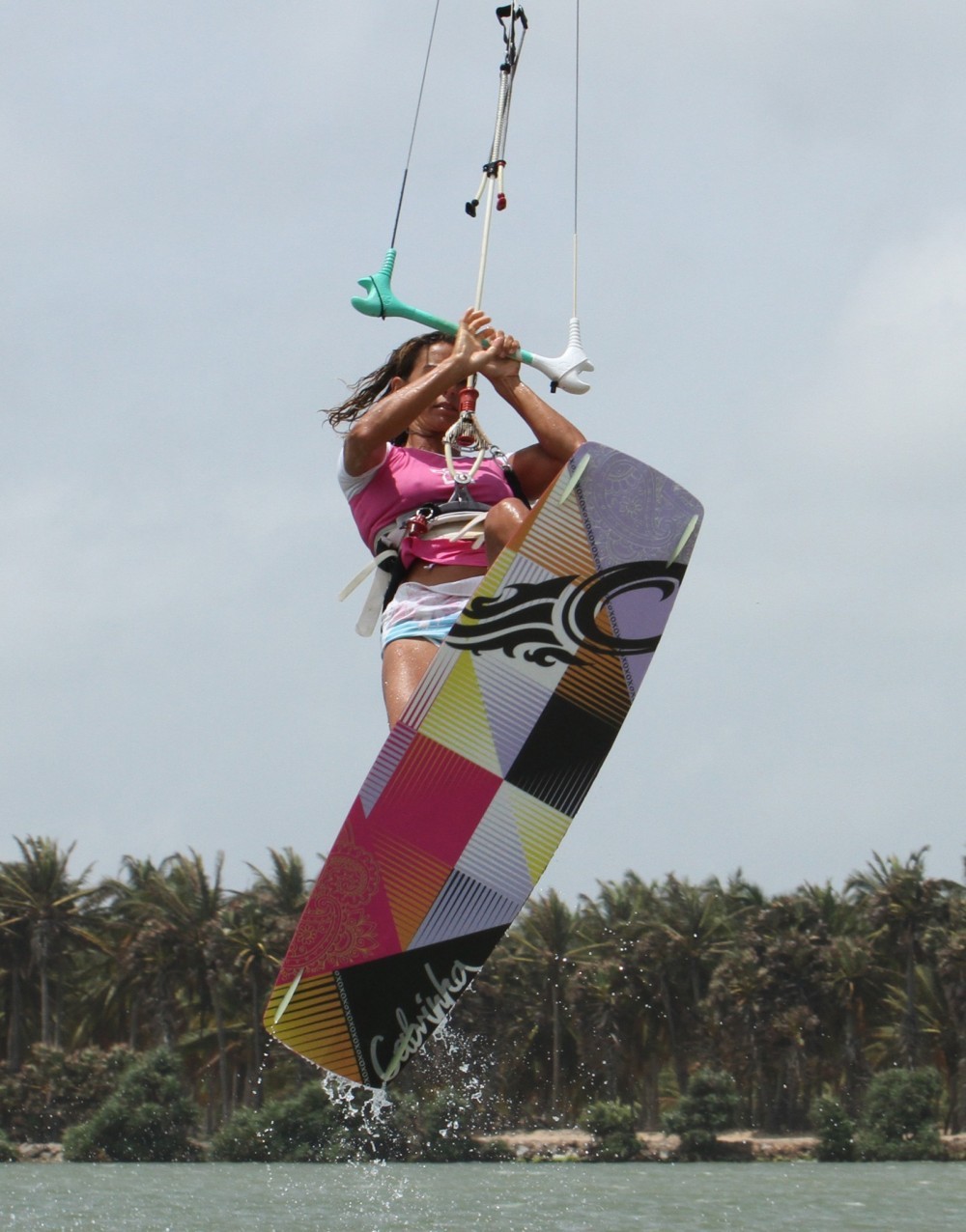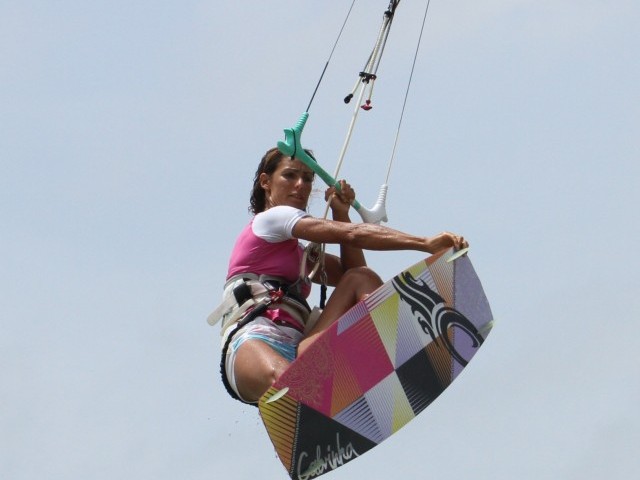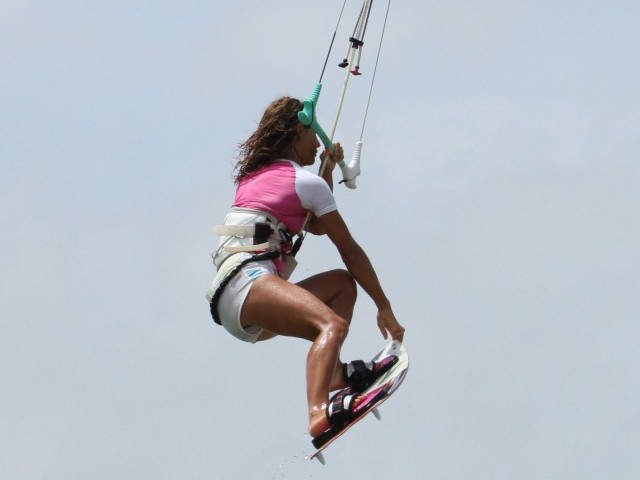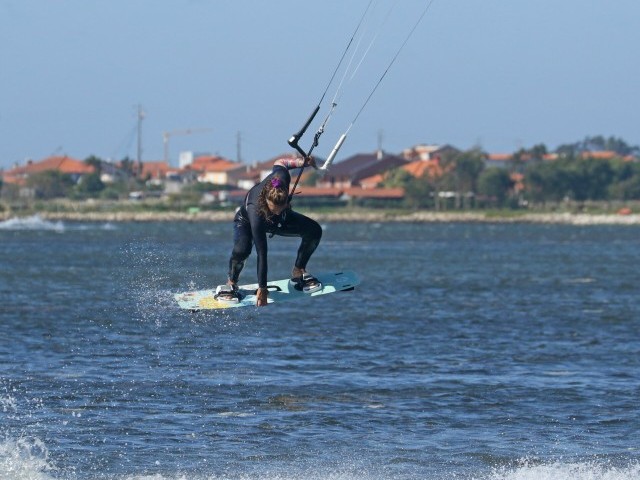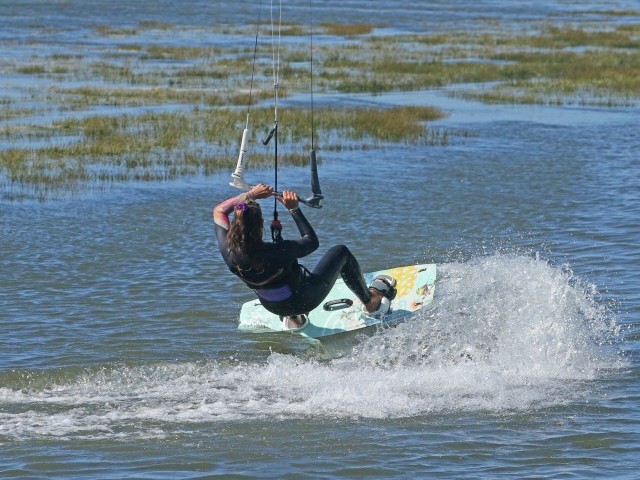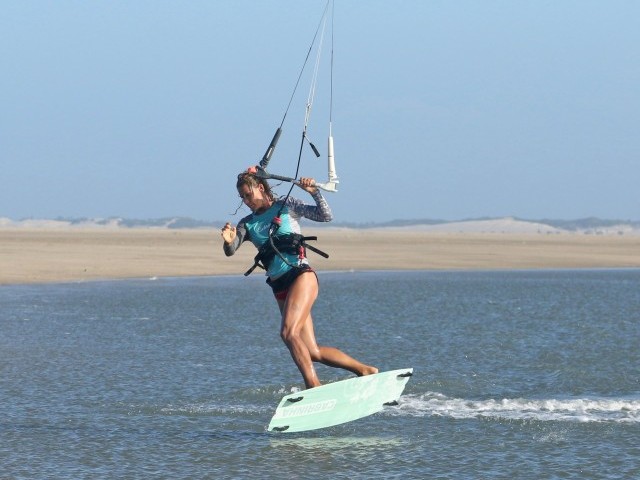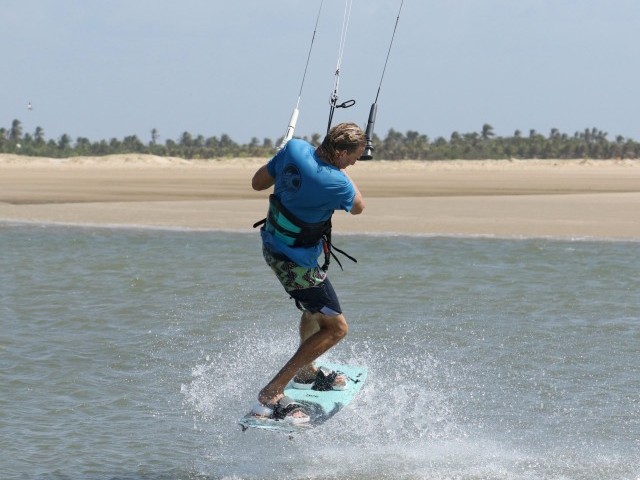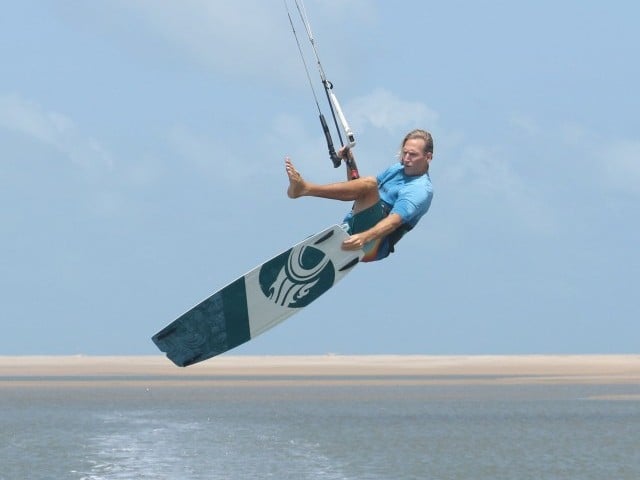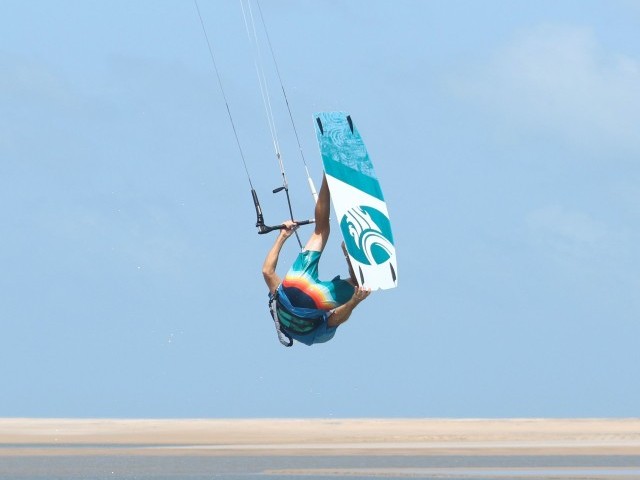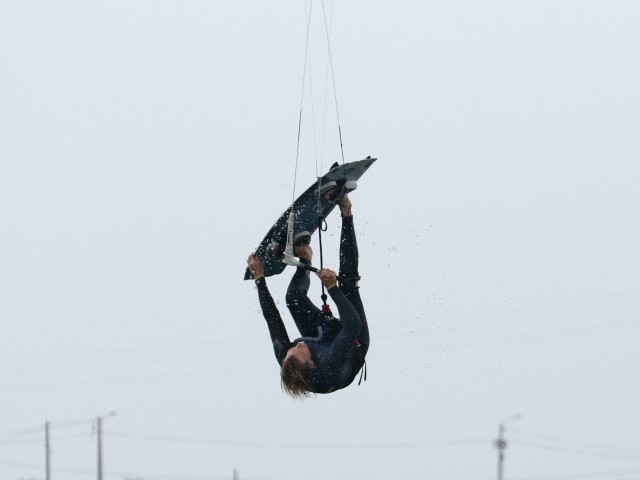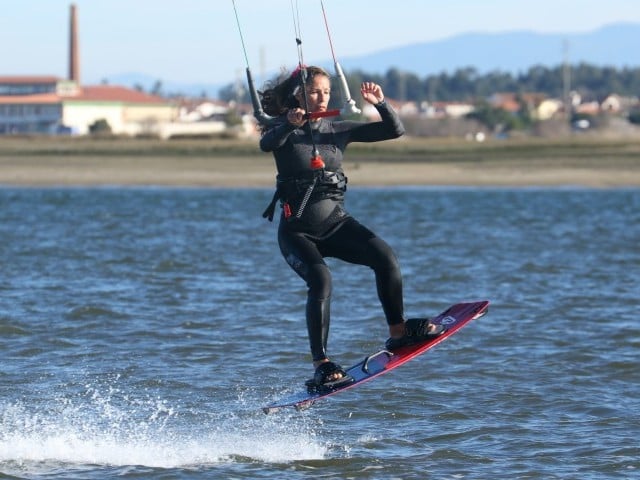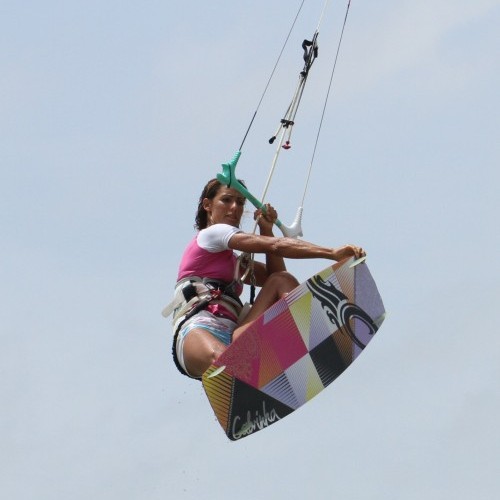
Sent Back Loop Nose Grab
Technique / Intermediate
Introduction
Taking one of the first jumping moves that many of you learnt during your early steps in aerial kiting and adding a glorious nose grab so that it doesn’t look in the slightest stale. In fact may get many of your peers back on the back roll bandwagon. Obviously all grabs are great but a nose grab really stands out as it forces you into a tweak, which just oozes style and smile. Only prerequisite for this is a sent back roll, but if you’ve already got the nose grab jump dialled, things will be easier.
The Jump
To grab the nose whilst back rolling you’ll need time, and for time read slow back loop rotation. The only way to pull of a fancy slow roll is to get enough height, so the jump is everything. Approach wise you should be coming in on a good edge with the kite either at 11 or 1 o’clock, no higher. Extend your front leg to push your hips back on the board, essential for a controlled back rotation, and even though this will bend you back leg, keep it solid not soft, otherwise you won’t be able to hold the edge against the kite’s pull.
In Pic A. Karine’s front leg is straight and her back leg is locked to maintain a solid edge and her derriere is low. With her kite moved into position and her bar on the sweet spot she can now send the kite as for a jump and concentrate on resisting the resultant pull and lift with her back leg.
The Initiation
The way you start your back roll will dictate the entire rotation, so bearing that in mind let’s have a look at when and how Karine get’s things under way. Having resisted with a good edge whilst sending the kite quite hard from 11 o’clock the pull should come early, at about 12 or just after. As soon as Karine feels the pull she stamps up off her back leg in a popping motion and then pulls the bar in. By popping up into the back loop she can’t lean too far back or bend both legs and therefore can’t carve too hard into wind under the kite, so her rotation will be slower. This is because she is taking off upwind, not already into wind, so she has further to rotate in the air. And by pulling the bar in Karine can immediately freeze the kite above her, preventing it from continuing back as is often the way in sent back rolls. Note that although Karine has carved into this rotation she has not thrown her head over her front shoulder. You want slow and controlled so keep your head looking forward.
Go Early
It’s the same for pretty much every grab, you have to go for the grab straight off the bat, the longer you wait the less time you’ll have and the less likely you’ll think it’s a good idea, especially when it involves a bit of stretching and twisting. You can clearly see another advantage of not throwing your head into the rotation. As Karine gets airborne, by looking forward she is actually staring right at the board. This way she can see where she will grab and can prepare for it. Karine lifts her front knee up and across her body, knee towars opposite shoulder and releases her back hand and reaches it down towards the nose – all the while keeping the bar in with her front hand.
The Nose Grab
This is a beauty, and by jove does it suit a back roll. Once you’ve got the nose or toeside edge up front, do actually grab it firmly as it’ll help you pull your front leg in and give you something to push against with the back leg, leading to a wonderful tweak, which you can hold for as long as you dare. Looking at the grab keeps your head between your shoulders, so will keep you rotating slowly. This is probably a good moment to mention the advantage of giving the kite a decent send for the jump. It’s not just about getting height, but because you’ll spend a considerable amount of time keeping the bar pulled in with only your front hand, the kite will merely move from behind you to slightly in front of you. If you gingerly drift the kite up, by the time you come around your back roll the kite will be way too far forward and pulling you off balance.
The Finish
If your rotation is controlled and the kite is not too far forward you can hold the grab until just before touchdown. However looking at your grab and the front of the board will not encourage you to finish off the rotation. To make sure that you complete the 360˚ and get far enough around to land perfectly you will eventually need to turn your head over your front shoulder to see where you’re going, spot your landing and get the board pointing downwind. When you do release the grab, only release the grab – so keep your knees up and the bar in so that you can dive the kite for landing.
Top Tips
Keeping in line with practicalities do start with some back rolls, concentrating on the send, upward take off and slow rotation. Then start to bring your front knee up and across whilst keeping your back leg bent. Once your happy with this release the front hand and go for the early grab, which you can hold or touch for just a fraction of a second. Finally build up to a long tweaked hold.
Trim your bar and sweet spot in a touch, as it’ll make reaching the shoulder across for the grab more comfortable. And keep your harness tight!
Common Problems
If you are over-rotating your back roll and either landing across the wind on an edge or starting another rotation make sure that you don’t carve up excessively during your take off. You should go from the edge that you’ve approached with, and then kick up and around. Also make sure you dive the kite for the landing as this will stop your rotation and pull you off down wind.
If you can’t reach the grab, try a few without a back roll. The nose grab is more about bringing your knee up and across under your harness hook, rather than you reaching down for it.
If you’re getting pulled forward and off balance by the kite in the air, either crashing or landing nose first. This is a result of the kite flying forward of 12 o’clock, so in Karine’s case towards 11, and can be due to a number of reasons. Firstly make sure your hands are centred on the bar, keep the bar in with one hand without yanking it forward. Make sure you send the kite, the further it goes back, the further it needs to return, so there is a perfect balance depending on your height and kite size.
Keystones
- Good solid edge with legs resisting
- Send kite positively
- Pop up into the back roll (not around)
- Pull front knee up for early grab
- Turn head to complete rotation
This technique article was in Issue 41 of IKSURFMAG.
Related
By Christian and Karine
Christian and Karine have been working together as a coaching team, running improver to advanced kitesurfing clinics since 2003.






